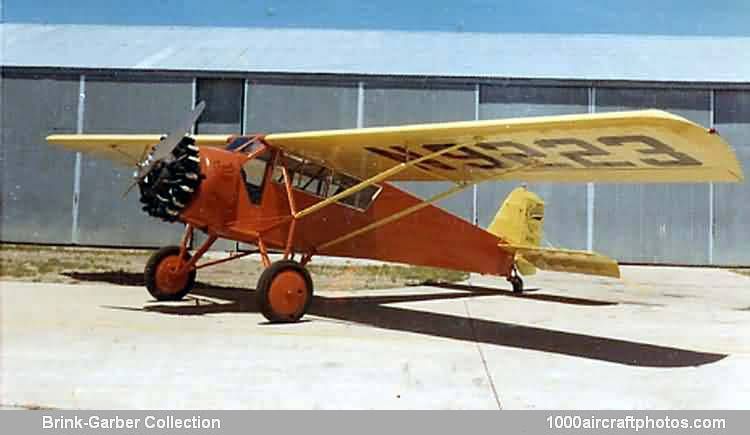GILLES AULIARD COLLECTION
No. 10524. Curtiss 50D Robin C-2 (NC323J c/n 480)
Photographed at Brodhead, Wisconsin, USA, September 11, 2010, by Gilles Auliard
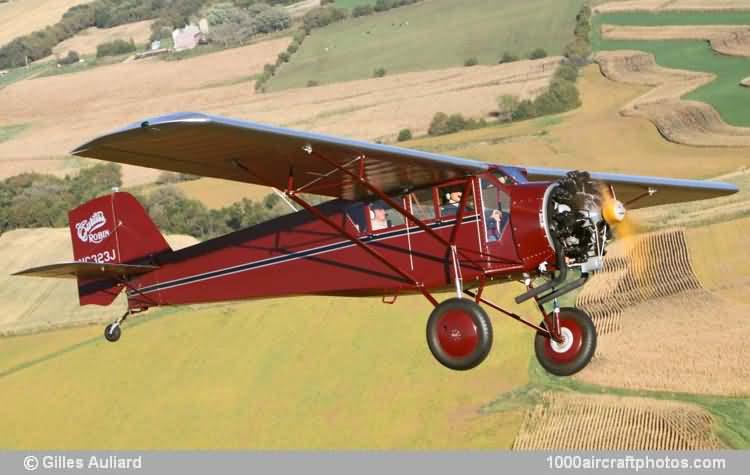
07/31/2013. Remarks by
Johan Visschedijk: "In the opening months of the Lindbergh Boom, Curtiss decided to produce a three-seat cabin monoplane for the expanding personal aeroplane market. With steel-tube fuselage and wood-frame wings using the thick Curtiss C-72 airfoil, this was a conservative design; the pilot sat forward at stick-type controls and the two passengers sat side-by-side behind him. The choice of power plant was surprising for the time – the 12-year-old war-surplus Curtiss OX-5. It has been said that the Robin was produced specifically to use up Curtiss's stock of OX-5s. With its price of only $250.00, the OX-5 contributed to the Robin's popularity by keeping the initial price down to $4,000. Early Robins with the 185 hp Curtiss Challenger engine sold for $7,500 and those with the 165 hp Wright J-6-5 sold for $7,000.
An odd feature of a few early Robins was the strutting, circular-section steel tubing was used, and this was streamlined by the attachment of broad fairings that were supposed to act as airfoils to produce lift. These were soon replaced with streamlined steel tubing. Early landing gears used rubber cord shock absorbers housed in streamlined boxes; these were replaced by oleo-pneumatic shock struts. Four Robin prototypes, with Curtiss engineering designations L-710, were built at Garden City but production was assigned to St.Louis, where the first one flew on August 7, 1928. Altogether, 769 Robins were built, making it the most numerous US civil aeroplane model of its day and the Curtiss model built in the greatest numbers between the two World Wars. Robins reached a production peak of 17 per week in mid-1929.
Serving mostly as private-owner types, Robins did little to win fame except for three separate occasions when they broke the world's refueling endurance record – 420 hr 21 min on July 13-30, 1929; 553 hr 28 min on July 21-August 17, 1930, by the same aircraft and crew; and 653 hr 34 min on June 4-July 1, 1935. A Robin was also used to set the women's duration record at 123 hours in January 1930, later to be beaten by a Thrush. Perhaps the best-known Robin of all is the former OX-5 model converted to J-1 and flown from New York City to Ireland on July 17-18, 1938. Pilot Douglas 'Wrong-Way' Corrigan had declared his intention to fly non-stop to Los Angeles, but turned east and crossed the Atlantic instead.
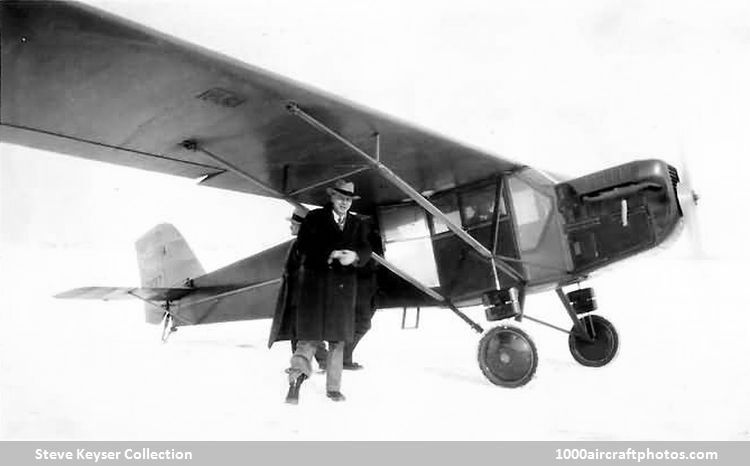
Robin (Model 50) (
Steve Keyser Collection)
Robin (Model 50). The OX-5 powered prototypes and the earliest production models were identified and marketed simply as the Curtiss Robin.
Challenger Robin (Model 50A). Early Robins using the 165 hp version of that unique two-row six-cylinder Curtiss engine were built. No letter designation was used, distinction from the contemporary OX-5 model being established by the naming of the engine. Like the early OX-5 version, this first Challenger variant used a tail skid and was not fitted with wheel brakes.
Comet Robin. A variant unknown either to Curtiss or the US Government appeared in 1937 when a private owner installed an 150 hp Comet radial engine in a J-1 Robin, c/n 693, registered NC791M. This unauthorized act was performed in Oregon, the last of the American states in which aeroplanes could fly without federal licenses or inspection.
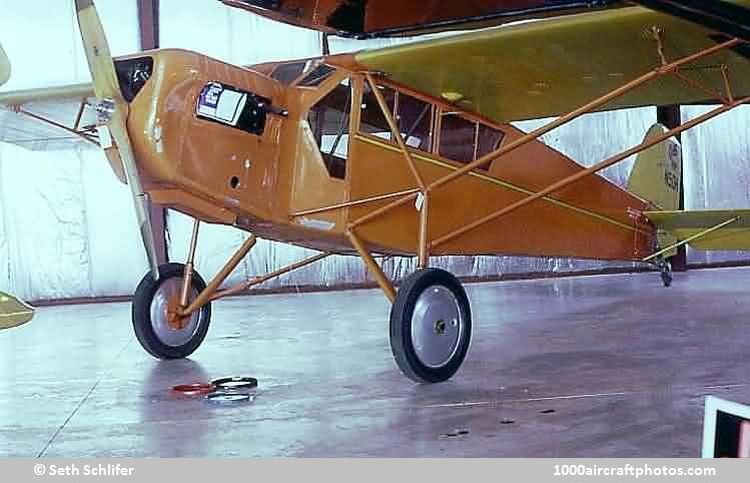
Robin B (
Seth Schlifer Collection)
Robin B. This most popular Robin had such refinements as brakes and a steerable tail wheel. The price of a Robin B dropped to as low as $2,495 in an attempt to dispose of unsold models in the Depression year of 1930. Approximately 325 Robin Bs were built.
Robin B-2. Some Robins were fitted with the 150-180 hp Wright A, I, or E engine.
Robin C (
Brink-Garber Collection)
Robin C. Approximately 50 improved Robin Cs with the 185 hp Curtiss Challenger engine were built in St.Louis, while also two special Cs with earlier 170 hp Challenger engines were built.
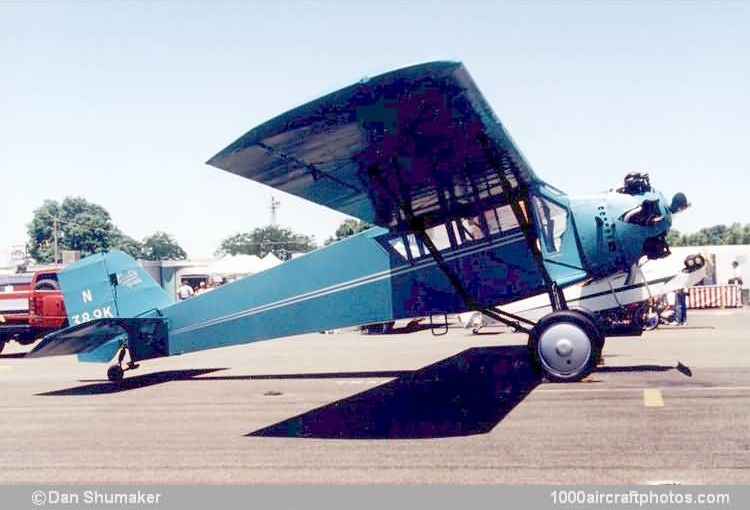
Robin C-1 (Model 50C) (
Dan Shumaker Collection)
Robin C-1 (Model 50C). The Robin C-1 was the principal Challenger-powered model; at least 200 were built. A C-1 named St.Louis Robin twice set a world's endurance record, the last for 553 hr 28 min in July-August 1930. One special C-1, c/n 668, registered NC767M, was fitted with a rigid landing gear to test the new Goodyear air wheels.
Robin C-2 (Model 50D). Six special C-2s with 170 hp instead of 185 hp Challenger engines, additional fuel was carried in a tank built over the top of the cabin and projecting above the wing contour.
Robin CR. This was to have been a production model with the 120 hp six-cylinder inverted air-cooled Curtiss Crusader engine that was developed as an intended replacement for the ubiquitous OX-5. At least two converted Robins were used for flight tests of the Crusader, but the engine was not put into production.
Robin W (Model 50J). To use a lower-cost engine than the Challenger but still have more power than the OX-5, several Robins were fitted with the 110 hp Warner Scarab air-cooled radial engine. The Robin W was not a success. The apparent increase in power was illusory; 1918 horsepower and 1929 horsepower were simply not the same. The old OX-5 engine had a displacement of 502 cu.in (8.23 l) and turned an 104-in (2.64 m) propeller at 1,400 rpm to deliver its rated 90 hp. The later 110 hp Warner, with 422 cu.in (6.92 l), turned a smaller-diameter propeller at 1,850 rpm but delivered significantly less thrust in spite of its higher rating. The weight advantage of the Warner could not offset the decreased thrust. The Robin was too big for the Warner engine, which later proved to be very successful in smaller aeroplanes. At least four Robin Ws existed, including the XC-10 built with Warner engine for the USAAC.
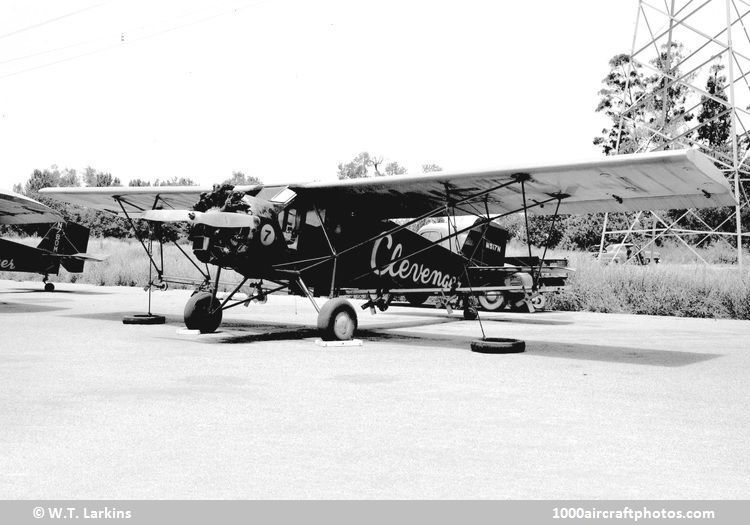
Robin J-1 (Model 50H) (
W.T. Larkins Memorial Collection)
Robin J-1 (Model 50H). A change to the 165 hp Wright J-6-5 Whirlwind engine in 1929 resulted in the Robin J-1, which was otherwise similar to previous models. At least forty were built as J-1s while other models were converted to J-1 standard by their owners. The most famous of these was the former B-model flown across the Atlantic by Douglas 'Wrong Way' Corrigan.
Robin J-2 (Model 50I). This was a J-6-5 Robin similar to the J-1 except for an increase of fuel capacity from 50 to 80 gal (189 to 303 l).
Robin J-3. FAA records listed the first J-2 (NC12H c/n 382) as a temporary J-3 model, but the detail differences are unknown.
Robin M. Several Robin Bs had their OX-5 engines replaced by the 115 hp Milwaukee Tank V-502 engine, which was an air-cooled rebuild of the OX-5 developed in the late 1920s.
Robin 4C (Model 50E). The Robin was a large aeroplane for only three people, and the logical expansion to four seats was made with the Model 4C, which was simply a production Robin C (c/n 208, NX8336) fitted with an extra seat alongside of and slightly aft of the pilot, who had been moved to the left as far as possible. No production of this original four-seat Robin was undertaken.
Robin 4C-1. The production four-seat Robin had the forward fuselage widened and deepened, but three were produced as special three-seat versions with the Challenger engine and a gross weight of only 2,600 lb (1,179 kg). The third 4C-1 was also the last Robin built.
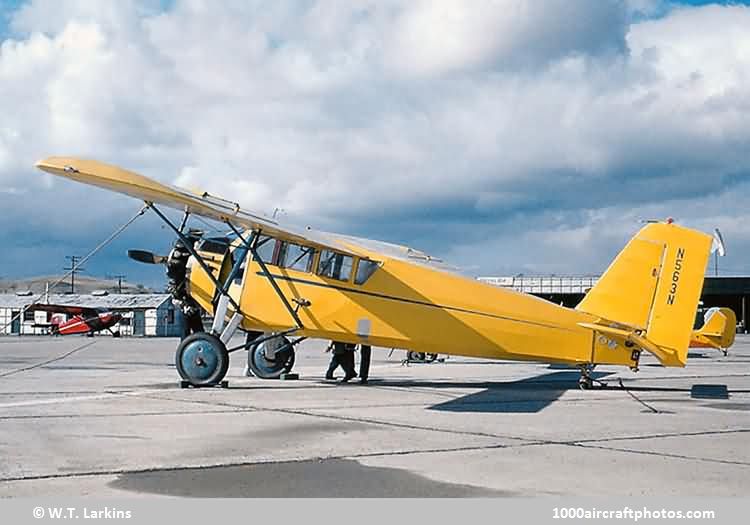
Robin 4C-1A (Model 50G) (
W.T. Larkins Memorial Collection)
Robin 4C-1A (Model 50G). At least eleven production Robin 4C-1A four-seaters were built. To obtain increased cabin room, the forward part of the cabin was made 4 in (10.16 cm) wider, the belly was deepened, and the windshield was enlarged. Because of this added bulk forward, the vertical tail was also enlarged. Initial price was $7,995.
Robin 4C-2. A change to the 225 hp Wright J-6-7 Whirlwind engine in the second Robin 4C-1A, c/n 704, registered NC510N, resulted in the designation 4C-2, but the new model was not certificated.
Robin XC-10. One much modified Robin W was delivered under serial 29-452 to the USAAC as the XC-10. With increased dihedral and enlarged vertical tail surfaces for improved stability, the XC-10 was used for early experiments in the radio control of unpiloted aeroplanes. Delivered in October 1929, the XC-10 accumulated only 100 flight hours before being scrapped in March 1935.Surviving Robins. Most of those that survived to the beginning of the Vintage Aeroplane or Antique boom that began in the early 1950s did so by being involved in useful work like crop dusting and bush flying, where their obsolescence and slow-flying characteristics were an asset rather than a handicap. At first, postwar attrition was high as more suitable aeroplanes became available as economical replacements there were 182 on the US register in 1947 but only 50 in 1952.
The Robin population has been more stable since the aircraft became valuable and pampered antiques. The number dropped to 42 in 1964, and while only 34 were listed as active in 1975, several are known to have been retired to museums, not lost to crashes or scrapping. However, presently 41 Robins still have a valid FAA registration.
The survivors were rescued by the antique movement. Relatively few were restored 'Pure' with their original (and orphan) engines; these were mainly for show. Those used as regularly active recreational aeroplanes are mostly fitted with war-surplus 220 hp Continental R-670 and 220-300 hp Lycoming R-680 radial engines.
Oddly, while an engine change changed the designation of the Robin in its early years, such is not now the case. A Robin, Robin C, or Robin J re-engined with a Challenger, a R-670, or R-680, is now just a modified Robin, Robin C, or Robin J."
Created March 31, 2011



